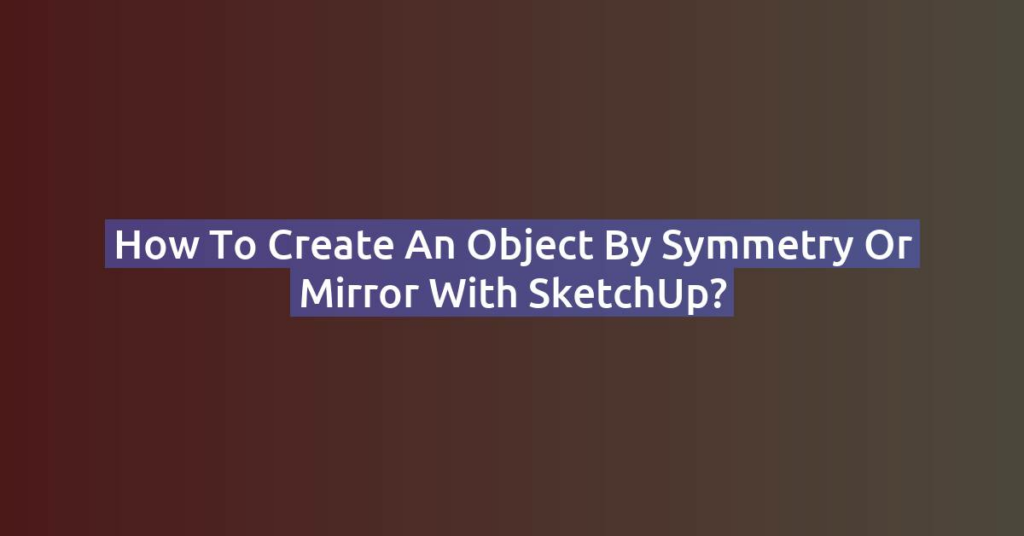In SketchUp, hiding objects can help you focus on specific areas of your model. However, once you’ve hidden multiple objects, bringing them back can be tricky if you’re unfamiliar with the process. This guide will walk you through the steps to quickly and easily unhide all hidden objects in SketchUp.
Why Use the Hide/Unhide Feature in SketchUp?
The hide and unhide feature in SketchUp is extremely useful when working on complex models. By hiding elements, you can:
- Focus on specific parts of the model without visual distractions.
- Improve model performance, as hiding complex geometry can make navigation smoother.
- Edit areas of your model more accurately by isolating certain parts.
However, when it’s time to bring everything back, especially after hiding multiple objects, the process can become confusing. Here’s how to unhide everything in just a few clicks.
Step 1: Show Hidden Geometry
Before unhiding everything, it’s helpful to make sure you can actually see which objects are hidden. This way, you can confirm that all hidden items will be unhidden.
- Go to the View Menu: Click on View in the top menu bar.
- Select “Hidden Geometry”: Check Hidden Geometry to display all hidden objects. These will appear as transparent or dotted lines in the model, making it easy to identify hidden elements.
With Hidden Geometry enabled, you’ll be able to see all the hidden objects in your model, even if they aren’t fully unhidden yet.
Step 2: Unhide All Objects
Now that you can see your hidden objects, you’re ready to bring them all back into view.
- Go to the Edit Menu: In the top menu, click on Edit.
- Select “Unhide”: Hover over Unhide to see additional options.
- Choose “All”: Click on All to unhide every hidden object in your model at once.
This command will unhide everything, including groups, components, and individual objects that were previously hidden.
Quick Tips for Managing Hidden Objects in SketchUp
Here are a few tips to help you manage hidden objects effectively, ensuring you can easily find and unhide elements in the future:
- Use Layers (Tags): Assigning objects to specific layers (now called “tags” in SketchUp) can help you control their visibility. This way, you can toggle visibility by layer rather than individually hiding or unhiding each object.
- Grouping for Easy Visibility Management: Grouping elements together allows you to hide or unhide groups instead of individual components. This can save time, especially in complex models.
- Keyboard Shortcuts: While SketchUp doesn’t have a default shortcut for unhide all, you can set up custom keyboard shortcuts in the Preferences menu for commonly used commands like hide and unhide.
Troubleshooting: What to Do If Objects Don’t Unhide
Sometimes, objects may still not appear after following the steps above. Here are some common reasons and fixes:
- Check Layers/Tags: Make sure that the layer or tag containing the object is not turned off. Hidden layers won’t display objects even if they are unhidden.
- Look for Nested Objects: If the objects are inside a group or component, you may need to enter the group (by double-clicking it) to unhide objects within it.
- Confirm No Active Section Cuts: Section cuts can hide parts of a model. Turn off section cuts in the View menu if parts of your model are still missing.
Conclusion
The hide and unhide tools in SketchUp are valuable for managing complex models, but bringing everything back into view can require a few extra steps. By following this guide, you’ll be able to unhide all objects in SketchUp quickly and effectively. With a better understanding of how to manage visibility, you can streamline your workflow and keep your modeling process efficient and organized.



